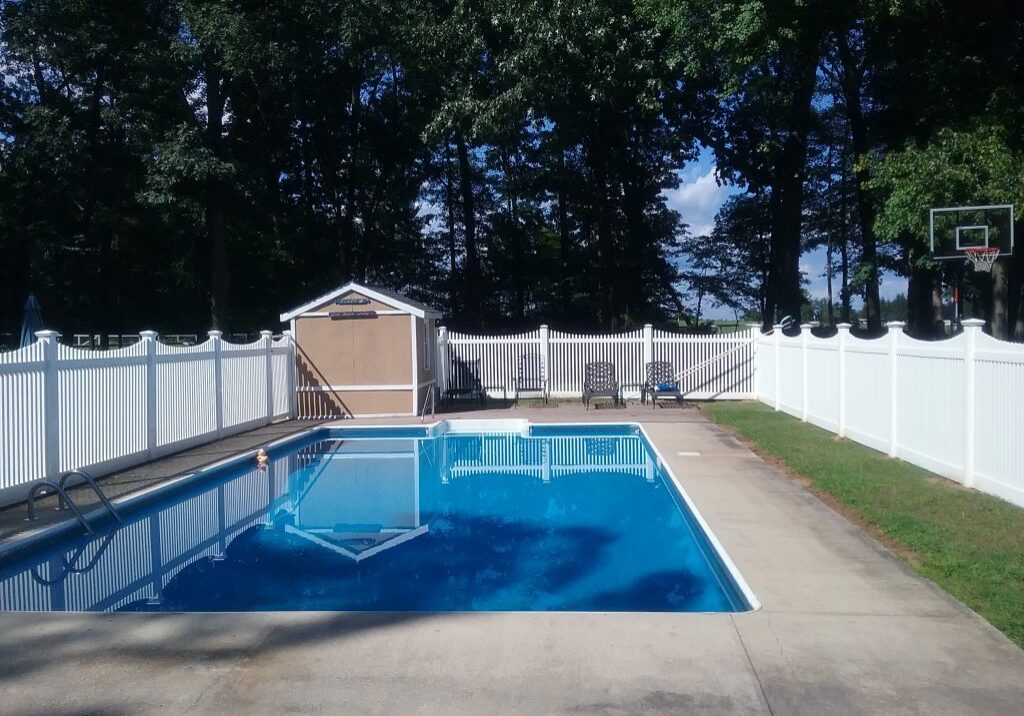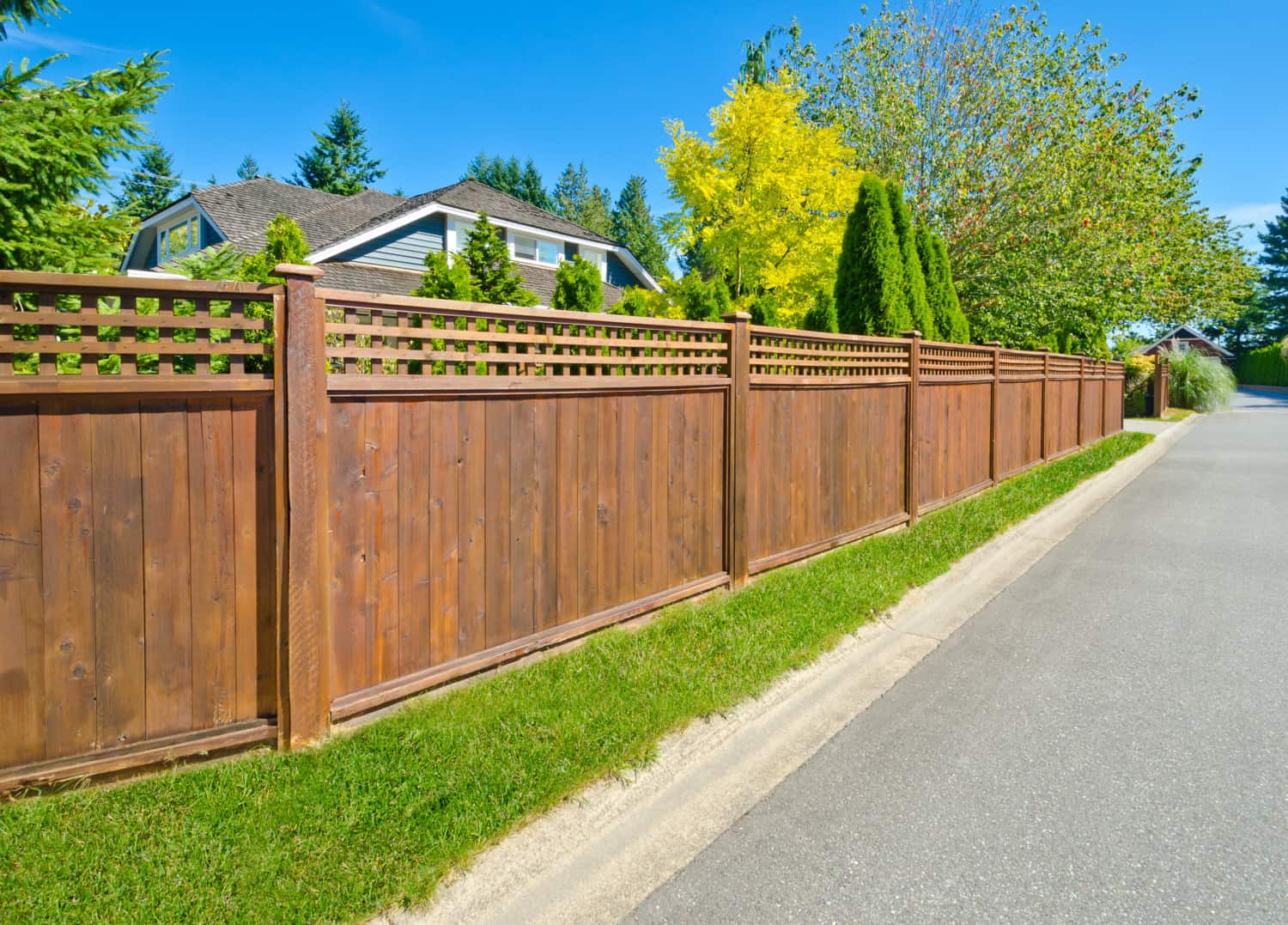All Categories
Featured
Setting up a fencing on your residential or commercial property can include personal privacy, safety and security, and aesthetic allure, however prior to you begin digging openings and establishing posts, it's vital to understand whether you need a permit. The type of fencing you intend to install, where it will certainly be positioned, and regional zoning laws can all influence the permitting process. Not obtaining the necessary authorizations could cause fines or the need to eliminate the fencing. Below's what you need to understand to ensure a smooth setup process.
Why Are Permits Essential for Fencing Installation? Authorizations are very important for guaranteeing that your fencing conforms with neighborhood zoning regulations and building codes. These guidelines aid make sure the security of your building and the surrounding area. In addition, permits protect against disagreements with next-door neighbors or regional authorities, particularly when it pertains to property lines, height limitations, and general layout.
Oftentimes, regional authorities call for authorizations to control things like presence at crossways or the proximity of a fence to public spaces like sidewalks or roads. Licenses also aid make certain that fences are mounted appropriately and safely, especially when it pertains to one-of-a-kind products or high fences.
Typical Types of Authorizations for Fencing Installation. The type of fencing you wish to set up and your area will determine which permits are required. Here are one of the most common kinds:
Building License. A structure license is typically needed for fencings that exceed particular height limitations (often above 6 feet), are located near a public roadway or sidewalk, or are made from certain materials. Structure allows ensure that the framework meets local building ordinance, including security standards.
Zoning Authorization. Zoning licenses are frequently needed to ensure that your fence follows neighborhood zoning regulations. Zoning legislations can define where a fencing can be positioned on your home (e.g., along residential property lines or in front backyards), in addition to set limits on fence elevation. These legislations are created to avoid obstructions that could impact website traffic safety and security or area aesthetics.
![]()
Trouble Permit. In some areas, you might require an obstacle permit to position your fencing a details range from property roadways, lines, or energies. Obstacles are meant to preserve correct space in between frameworks and home borders, minimizing potential disputes with next-door neighbors or public infrastructure.
Homeowners Association (HOA) Approval. If your residential or commercial property belongs to an area controlled by a Homeowners Association (HOA), you will likely need authorization from the HOA before installing a fencing. HOA standards usually govern the design, elevation, products, and even color of fencings, making certain that they match the total aesthetic of the area.
The Process for Getting a Fence Authorization. To obtain a fencing license, you usually require to call your regional city or county workplace. The majority of areas have a structure division or preparation workplace where you can get permits. The process includes finishing an application and providing comprehensive details regarding your suggested fencing, consisting of:
Fencing style (products, height, design) Location on the residential property. Home line details (for precise placement) Oftentimes, a website plan showing the proposed fence's placement will certainly be needed. You may likewise require to pay a license charge, which can vary based upon location and the complexity of the task.
As soon as you submit your application, the local authorities will evaluate it to make certain the fence follows neighborhood guidelines. Depending on your location, you may additionally need to schedule an examination or allow for a residential or commercial property study.
When Do You Not Need a Permit? In many cases, a permit might not be called for. Usually, you may not need a license if:
![]()
The fence is under a specific elevation (typically 3-4 feet for front backyards) You're replacing an existing fencing with the same type and elevation. The fencing is temporary (such as a yard fence) However, it's constantly a good idea to get in touch with your neighborhood structure or zoning department to validate the requirements, as regulations can vary.
Consequences of Not Obtaining an Authorization. In some cases, you might require to re-install the fencing according to code, which can be pricey and lengthy. Furthermore, not following the correct permitting process can develop issues with next-door neighbors, especially if your fence prolongs beyond your building line or doesn't meet elevation or layout needs.
Verdict. Prior to installing a fence, make sure you understand the neighborhood regulations and whether you need a permit. It is necessary to inspect with your regional building or zoning office, as well as your HOA if suitable, to recognize what's required. By obtaining the appropriate licenses, you'll make certain that your fence is legally certified, safe, and devoid of future difficulties. Taking this added action will certainly save you money and time over time while supplying assurance that your project is on the right track.
Why Are Permits Essential for Fencing Installation? Authorizations are very important for guaranteeing that your fencing conforms with neighborhood zoning regulations and building codes. These guidelines aid make sure the security of your building and the surrounding area. In addition, permits protect against disagreements with next-door neighbors or regional authorities, particularly when it pertains to property lines, height limitations, and general layout.
Oftentimes, regional authorities call for authorizations to control things like presence at crossways or the proximity of a fence to public spaces like sidewalks or roads. Licenses also aid make certain that fences are mounted appropriately and safely, especially when it pertains to one-of-a-kind products or high fences.
Typical Types of Authorizations for Fencing Installation. The type of fencing you wish to set up and your area will determine which permits are required. Here are one of the most common kinds:
Building License. A structure license is typically needed for fencings that exceed particular height limitations (often above 6 feet), are located near a public roadway or sidewalk, or are made from certain materials. Structure allows ensure that the framework meets local building ordinance, including security standards.
Zoning Authorization. Zoning licenses are frequently needed to ensure that your fence follows neighborhood zoning regulations. Zoning legislations can define where a fencing can be positioned on your home (e.g., along residential property lines or in front backyards), in addition to set limits on fence elevation. These legislations are created to avoid obstructions that could impact website traffic safety and security or area aesthetics.

Trouble Permit. In some areas, you might require an obstacle permit to position your fencing a details range from property roadways, lines, or energies. Obstacles are meant to preserve correct space in between frameworks and home borders, minimizing potential disputes with next-door neighbors or public infrastructure.
Homeowners Association (HOA) Approval. If your residential or commercial property belongs to an area controlled by a Homeowners Association (HOA), you will likely need authorization from the HOA before installing a fencing. HOA standards usually govern the design, elevation, products, and even color of fencings, making certain that they match the total aesthetic of the area.
The Process for Getting a Fence Authorization. To obtain a fencing license, you usually require to call your regional city or county workplace. The majority of areas have a structure division or preparation workplace where you can get permits. The process includes finishing an application and providing comprehensive details regarding your suggested fencing, consisting of:
Fencing style (products, height, design) Location on the residential property. Home line details (for precise placement) Oftentimes, a website plan showing the proposed fence's placement will certainly be needed. You may likewise require to pay a license charge, which can vary based upon location and the complexity of the task.
As soon as you submit your application, the local authorities will evaluate it to make certain the fence follows neighborhood guidelines. Depending on your location, you may additionally need to schedule an examination or allow for a residential or commercial property study.
When Do You Not Need a Permit? In many cases, a permit might not be called for. Usually, you may not need a license if:

The fence is under a specific elevation (typically 3-4 feet for front backyards) You're replacing an existing fencing with the same type and elevation. The fencing is temporary (such as a yard fence) However, it's constantly a good idea to get in touch with your neighborhood structure or zoning department to validate the requirements, as regulations can vary.
Consequences of Not Obtaining an Authorization. In some cases, you might require to re-install the fencing according to code, which can be pricey and lengthy. Furthermore, not following the correct permitting process can develop issues with next-door neighbors, especially if your fence prolongs beyond your building line or doesn't meet elevation or layout needs.
Verdict. Prior to installing a fence, make sure you understand the neighborhood regulations and whether you need a permit. It is necessary to inspect with your regional building or zoning office, as well as your HOA if suitable, to recognize what's required. By obtaining the appropriate licenses, you'll make certain that your fence is legally certified, safe, and devoid of future difficulties. Taking this added action will certainly save you money and time over time while supplying assurance that your project is on the right track.
Latest Posts
Make Your Desire Fencing a Fact with Montana Fencing Financing
Published May 05, 25
1 min read
Stylish Security Starts Below
Published May 05, 25
1 min read
Unmatched Top Quality and Custom Solutions for every single Home
Published May 05, 25
1 min read